Project
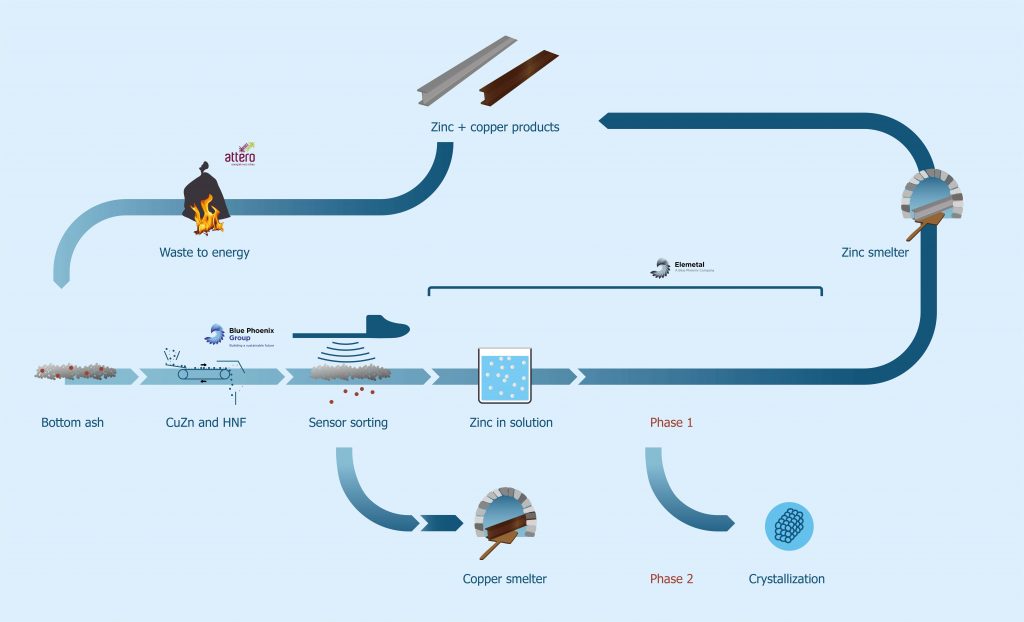
Projects background
Waste-to-Energy is widely used in Europe for treatment of residual waste. After thermal treatment the waste is converted to electrical energy and two “main” types of residues: bottom ashes and fly ashes. One tonne of residual waste results on average in 25-30% of bottom ash. These bottom ashes can be evaluated as a rich source of metals which do not incinerate during thermal treatment. The metals present in these ashes can be divided into ferrous, and non-ferrous metals like copper, aluminum, zinc. These metals are partially recovered against sometimes . . .
Prototype
A prototype subproject was introduced to deliver a proof of concept of efficient leaching of the metal concentrates and the recovery of zinc. Copper and zinc are simultaneously leached in an alkalic environment followed by purification of copper and zinc into its pure copper and zinc solutions. Once pure copper and zinc electrolytes have been obtained, copper cathodes can be produced and zinc can be sold as zinc sulphate solution. The zinc sulphate can alternatively be crystalized towards zinc sulphate crystals.
Expected results
- Prototype tested and fully functioning to prove copper and zinc recovery into marketable products.
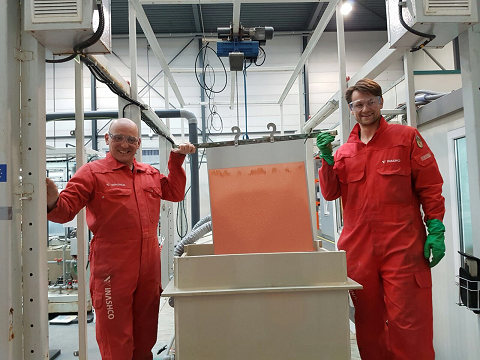
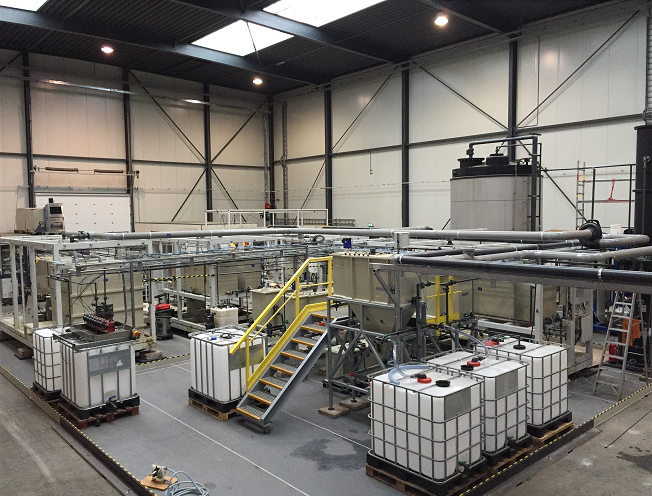
DEMO Phase 1
During demonstration of phase 1 zinc will be separated from the heavy-non-ferrous flow using sensor sorting technologies. These zinc concentrates will be the input for the Elemetal leaching demonstration where zinc will be selectively leached (bringing into solution). This zinc sulphate solution will be sold to different industries who will use it to make a final zinc product which can be put back into a circular economy. The demonstration facility under the LIFE project is aiming at an annual processing capacity of ~450 metric tonne of zinc output for phase 1
Expected results
- Detailed engineering and permitting in place to start construction
- The LIFE PCR demonstration phase 1 commissioned, tested and fully functioning
- Pre-separation of zinc by a sensor installation, followed by a leaching process in which the zinc concentrate is further refined to a marketable zinc product
DEMO Phase 2
The production of zinc sulphate in solution has a drawback that it is a relative “low value” product. The zinc content in this product is about 11-12 w% and still a lot of water is being transported. From an environmental and economic point of view it I smore interesting to make a product with a higher zinc value. Within the LIFE project it is chosen to demonstrate the production of zinc sulfate crystals which contain a zinc content varying between 22 and 36% depending on the amount of hydrated water crystals.
During phase two the demonstration will be scaled up to an annual production capacity of 1300-2000 metric tonne of zinc depending on a 24/5 or 24/7 operation.
Expected results
- The LIFE PCR demonstration phase 2 commissioned, tested and fully functioning
- Pre-separation of zinc and brass, followed by leaching, purification and recovery of copper and zinc in a pure marketable form
Other expected results
- Pre-concentration of metals from 250 000 tons of bottom ash by physical treatment
- Improved bottom ash quality
- Validated LCA on the environmental impact for DEMO phase 1as well as DEMO phase 2
- Dissemination of the project results to relevant stakeholders
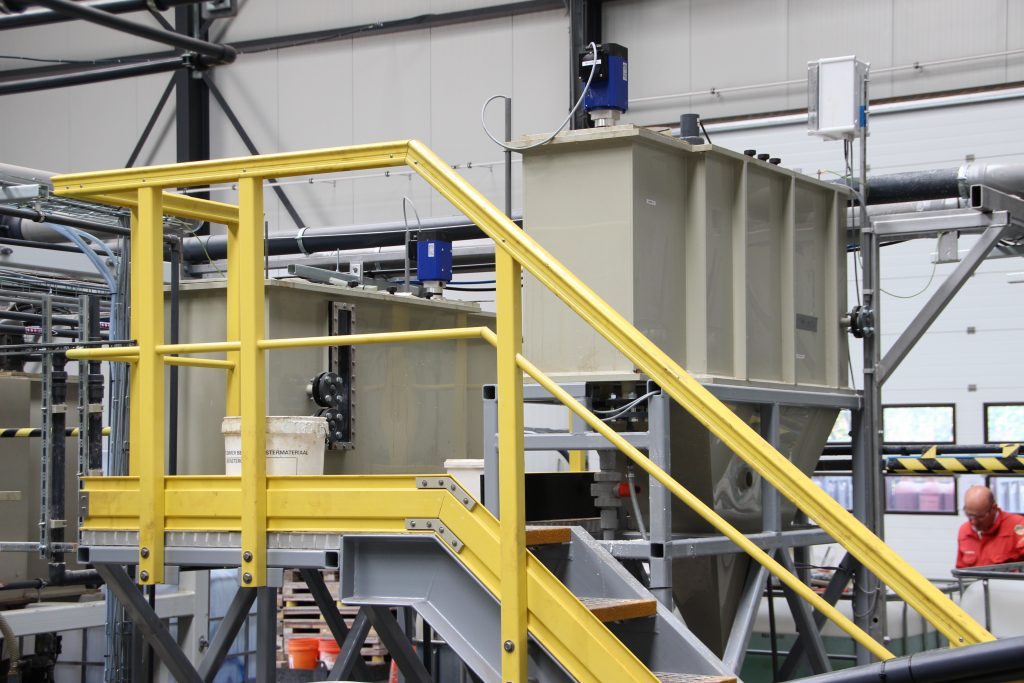
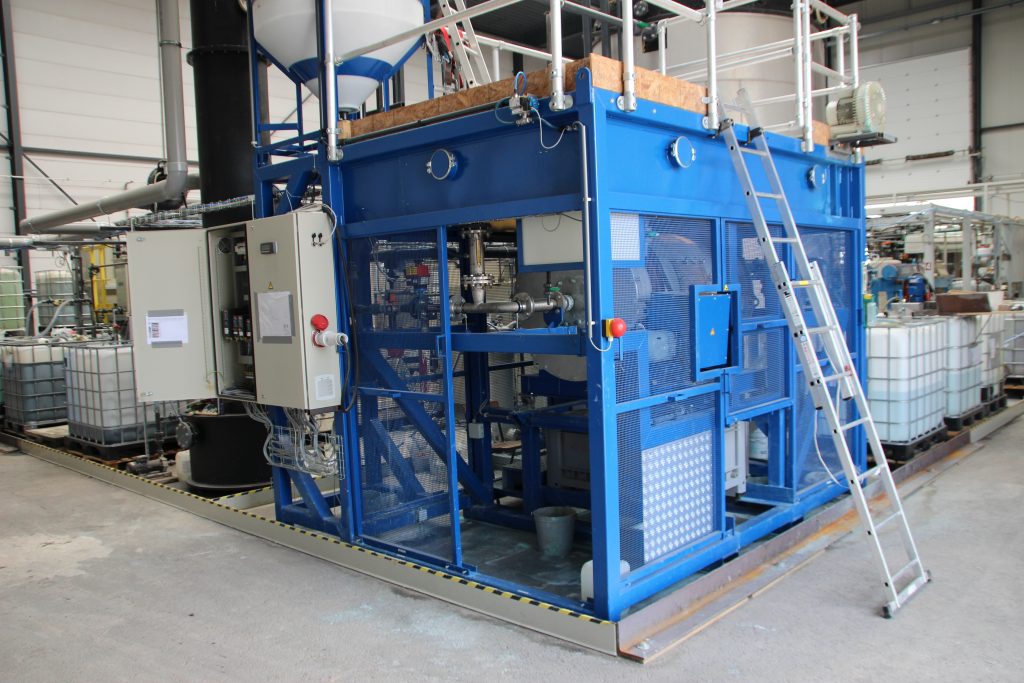
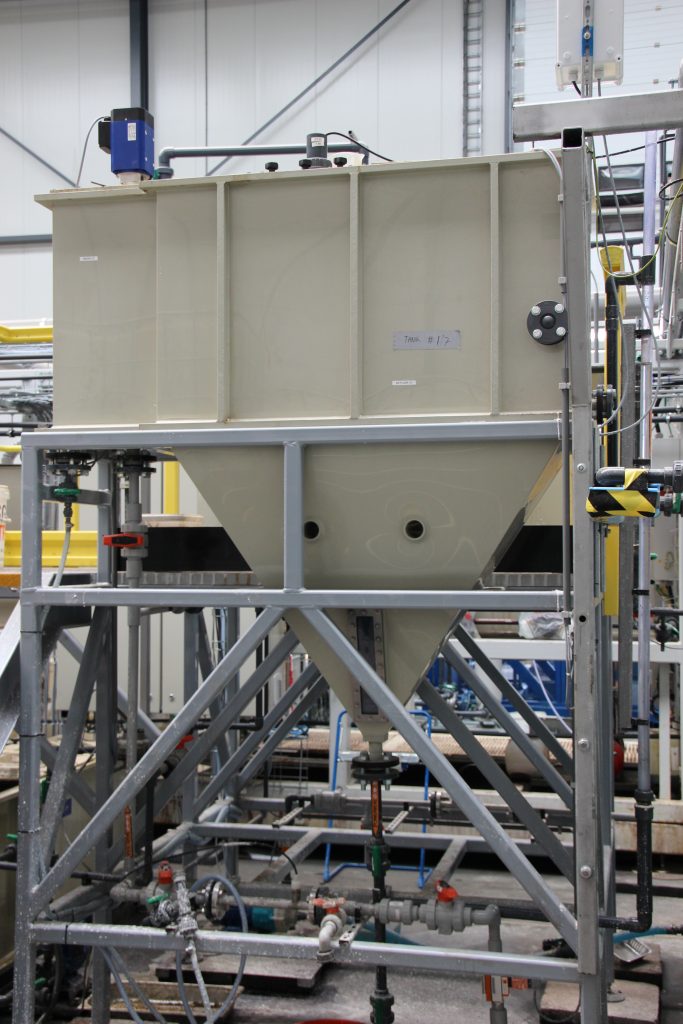
Achieved Results
During prototype tests the technical and economical feasibility was tested for co-refining . . .
First results on the phase 1 demonstration are looking promising. Zinc is recovered from non-ferrous . . .
A Life Cycle Analyses was performed in cooperation with de company CE Delft on the various treatment . . .